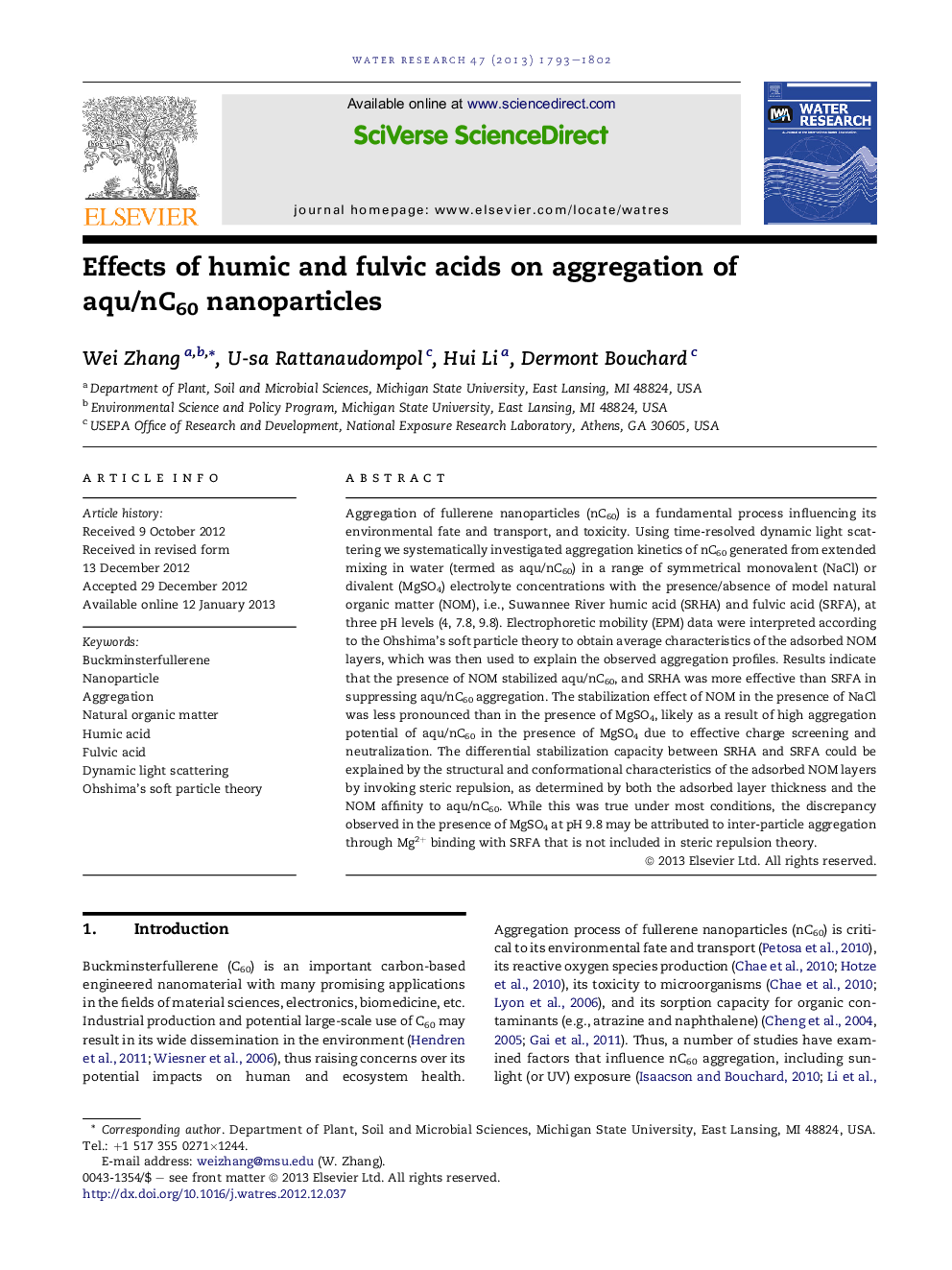| Article ID | Journal | Published Year | Pages | File Type |
|---|---|---|---|---|
| 4481830 | Water Research | 2013 | 10 Pages |
Aggregation of fullerene nanoparticles (nC60) is a fundamental process influencing its environmental fate and transport, and toxicity. Using time-resolved dynamic light scattering we systematically investigated aggregation kinetics of nC60 generated from extended mixing in water (termed as aqu/nC60) in a range of symmetrical monovalent (NaCl) or divalent (MgSO4) electrolyte concentrations with the presence/absence of model natural organic matter (NOM), i.e., Suwannee River humic acid (SRHA) and fulvic acid (SRFA), at three pH levels (4, 7.8, 9.8). Electrophoretic mobility (EPM) data were interpreted according to the Ohshima's soft particle theory to obtain average characteristics of the adsorbed NOM layers, which was then used to explain the observed aggregation profiles. Results indicate that the presence of NOM stabilized aqu/nC60, and SRHA was more effective than SRFA in suppressing aqu/nC60 aggregation. The stabilization effect of NOM in the presence of NaCl was less pronounced than in the presence of MgSO4, likely as a result of high aggregation potential of aqu/nC60 in the presence of MgSO4 due to effective charge screening and neutralization. The differential stabilization capacity between SRHA and SRFA could be explained by the structural and conformational characteristics of the adsorbed NOM layers by invoking steric repulsion, as determined by both the adsorbed layer thickness and the NOM affinity to aqu/nC60. While this was true under most conditions, the discrepancy observed in the presence of MgSO4 at pH 9.8 may be attributed to inter-particle aggregation through Mg2+ binding with SRFA that is not included in steric repulsion theory.
Graphical abstractFigure optionsDownload full-size imageDownload high-quality image (243 K)Download as PowerPoint slideHighlights► We investigated nC60 nanoparticle aggregation influenced by natural organic matter. ► Ohshima's soft particle theory was used to obtain average NOM layer characteristics. ► Humic acid was more effective than fulvic acid in stabilizing nC60 nanoparticles. ► Divalent Mg2+ significantly affected NOM-nC60 interactions and nC60 aggregation.
